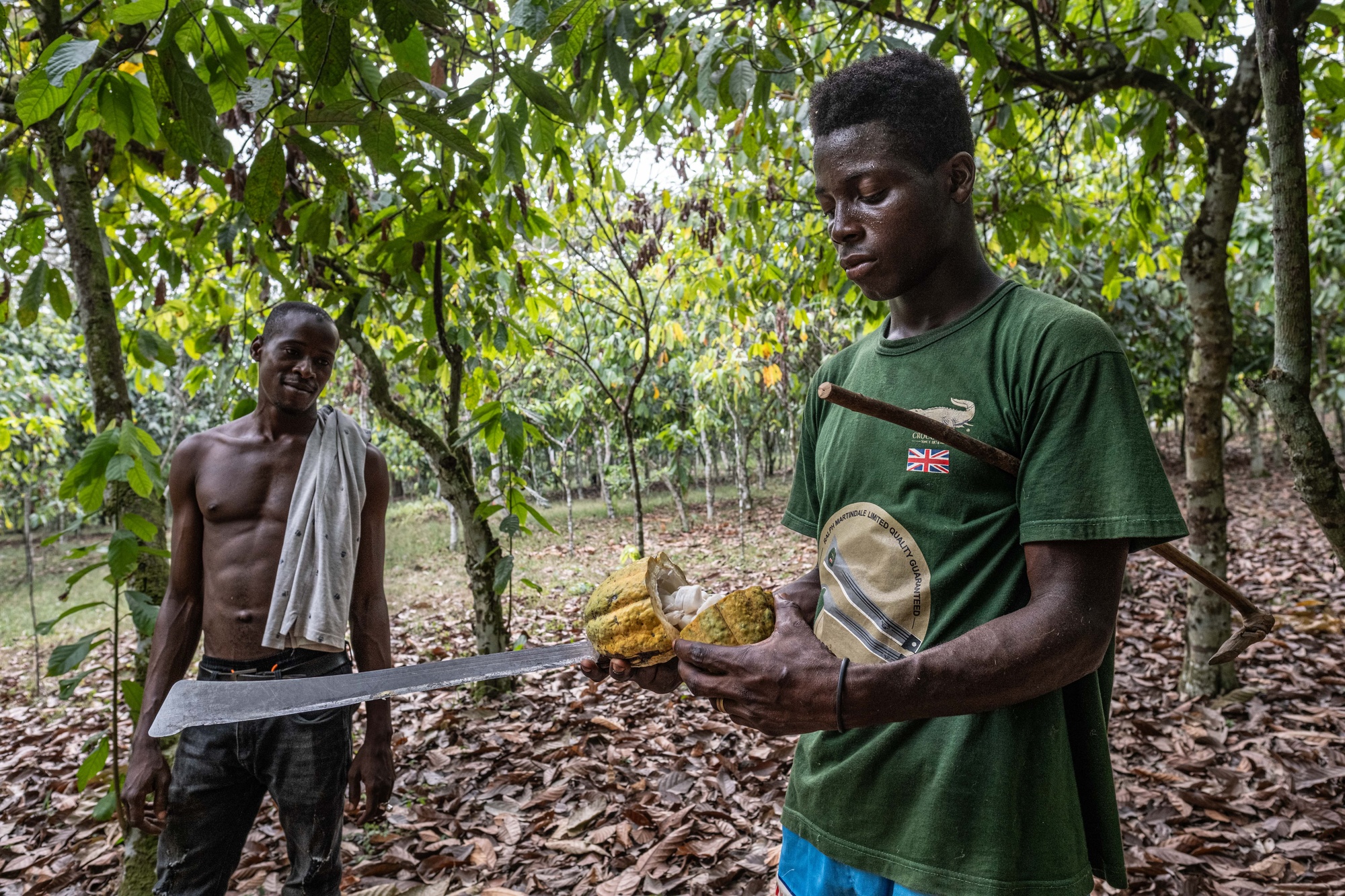Ivory Coast 2024 – LifeGate
In recent years, growing cocoa has become increasingly difficult. Yields are poor due to climate change and new diseases affecting the plants. Global cocoa supply 2023/2024 is estimated to decrease by 11% compared to 2022/2023.
That’s why Cocoa prices have more than tripled over the last year on global market. But the official farmgate price that growers can charge for their beans in Ivory Coast, the world’s largest producer, has yet to reflect this.
Farmers, often grouped into cooperatives, are finding it increasingly difficult to continue this crop in order to be able to make it profitable enough. “It’s a family tradition, but I’m thinking of abandoning it and moving on to something else . The plants my father left me are producing less and less…”, affirms Assi Hervé, a grower in the Agnéby-Tiassa Region in Ivory Coast.
“We have been using chemicals for years to achieve certain goals. Those too, however, are increasingly expensive”, says Agnara Aboud, another farmer and president of a cooperative.
The cultivation of cocoa and its supply chain that goes all the way to large international industrial brands have many dark sides that are evident here. Social injustice, deforestation, land degradation, disproportionate use of toxic fertilizers and pesticides (including many banned in the EU but sold here) without adequate protections are some of them.
“If we don’t do something to make production environmentally and humanly sustainable … cocoa could one day become a luxury good … or disappear.” After experiencing health problems due to chemicals, Ambroise N’Koh decided to switch to a completely organic cultivation. He recovered natural techniques to combat cocoa diseases and parasites.
These and other personal stories are part of the project, “The true cost of cocoa” produced with LifeGate.















